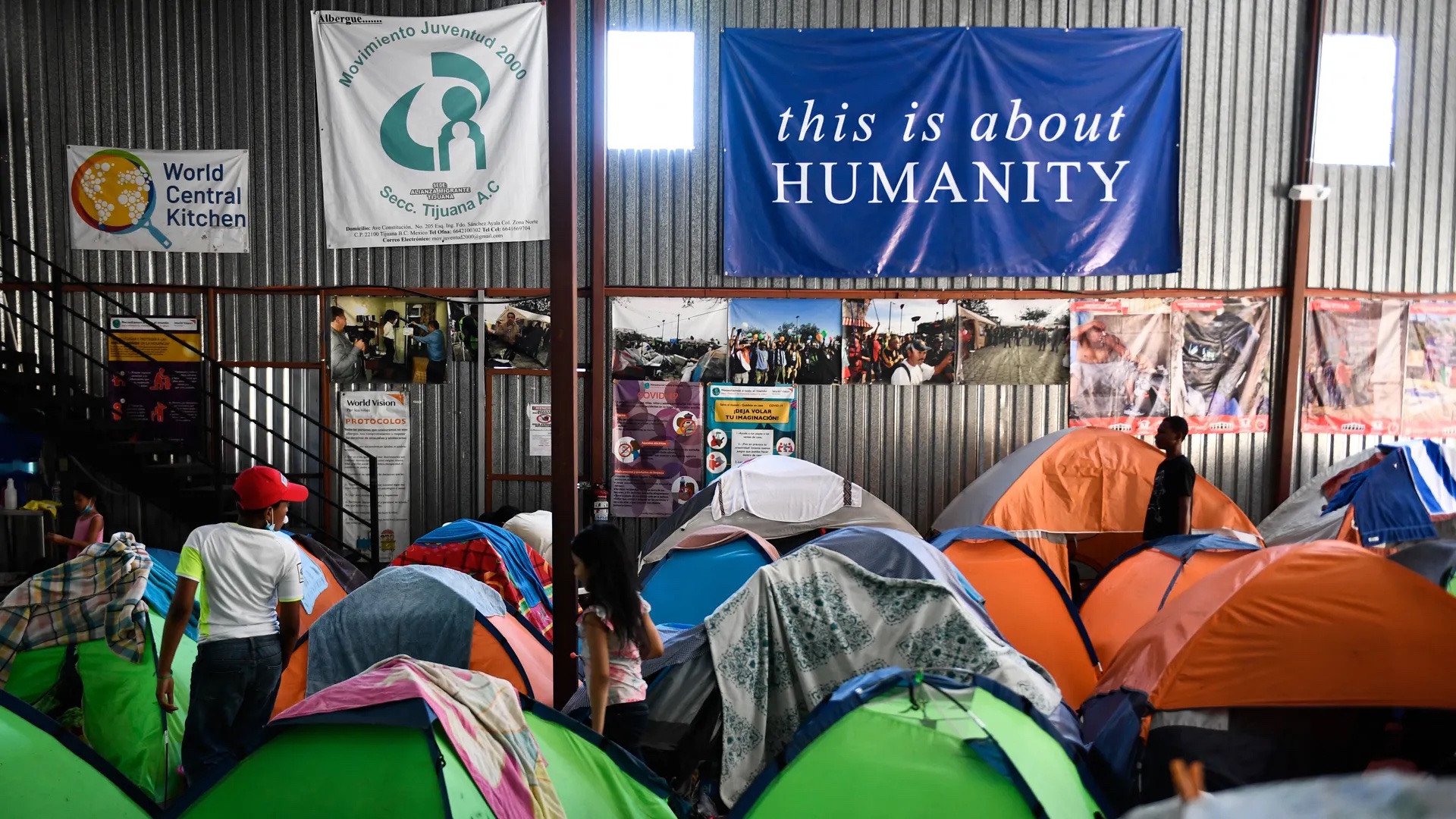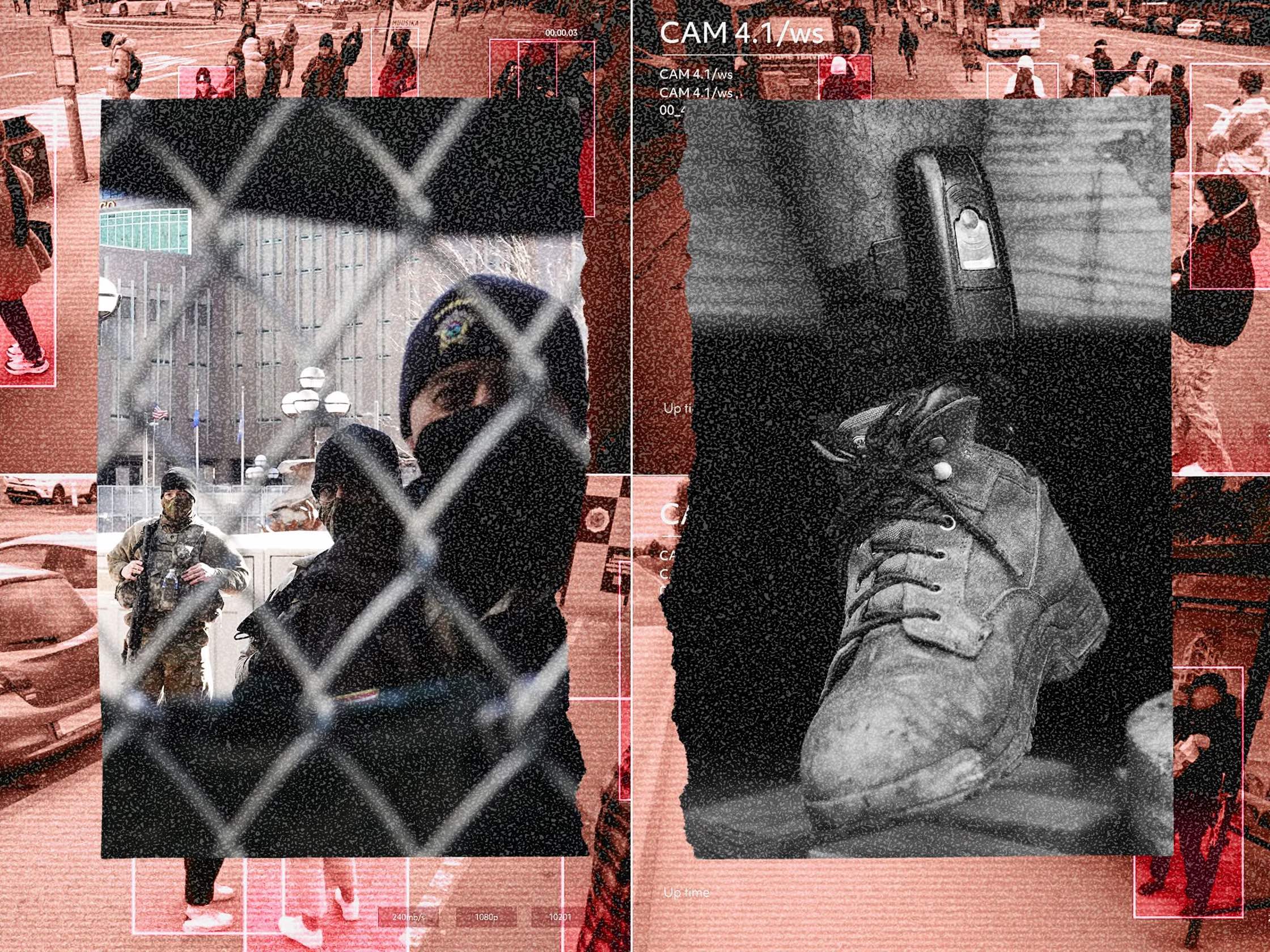Averi Aya-ay, Associate Member, Immigration and Human Rights Law Review

I. Introduction
The Department of Homeland Security (DHS) has previously stated that the Remain in Mexico (RMX) program has “unjustifiable human costs” and “inherent problems…that no amount of resources can sufficiently fix.”[1] Since President Trump’s inauguration on January 20, 2025, the Trump administration has issued a slew of executive orders that significantly affect immigration in the United States. Specifically, President Trump issued Executive Order 14,165, “Securing Our Borders,” which reinstated the Migrant Protection Protocol (MPP), commonly known as the RIX program.[2] This program sends migrants seeking U.S. admission from the U.S.-Mexico border back to Mexico to await the processing of their immigration cases, including individuals applying for asylum in the United States.[3] Through this program, asylum seekers have been targeted for life-threatening violence including kidnapping, extortion, and sexual assault while waiting in camps and shelters for their cases to be processed in the United States.[4] The Trump administration’s reimplementation of the RMX violates constitutionally guaranteed due process[5] and the principle of non-refoulement promised under the 1951 Refugee Convention and its 1976 Protocol.[6]
II. Background
In 2019, the Trump administration created the RMX program[7] giving DHS Secretary the power to return to Mexico certain asylum seekers until their hearing date.[8] The RMX program covers migrants attempting to enter without documentation and those seeking asylum in the United States.[9] Under § 235(b)(2)(C) of the Immigration and Nationality Act (INA), if a migrant is arriving from a foreign territory contiguous to the United States, the DHS Secretary may return that migrant to the territory pending proceedings.[10] The RMX program justifies its return of migrants arriving from the U.S.-Mexico border back to Mexico under this section of the INA.[11]
Before the RMX program, asylum adjudications were conducted while the asylum seekers resided in the United States.[12] People seeking asylum could assert a “credible fear” of returning to their home countries, and if they established such fear, they were permitted to apply for asylum and other protections from within the United States.[13] The Trump administration created this policy to “reduce the number of aliens taking advantage of U.S. law and discourage false asylum claims.”[14] The administration asserted that this program will reduce the strain on the U.S. immigration system and will allow DHS to more effectively assist legitimate asylum seekers, as this program will discourage any fraudulent claims for asylum.[15]
The RMX program however has subjected asylum seekers to violent attacks, murder, kidnapping, and sexual assault while they wait in “some of the most dangerous places along the Mexico/U.S. border” for their asylum cases to be processed in the United States.[16] For instance, a six-year-old child named Antonio was repetitively sexually assaulted while waiting with his family in Juarez, Mexico, to seek asylum in the United States.[17] Antonio and his family had fled a gang in El Salvador that had extorted them for months and assaulted his father.[18] In 2022, an international human rights organization documented over 2,500 attacks against individuals who are enrolled in the RMX program.[19]
The Biden administration attempted to terminate the RMX program once it came into office in 2021.[20] In June 2021, the Biden administration issued a memorandum to terminate the RMX.[21] However, a district court ruled that the memorandum did not comply with the Administrative Procedure Act and the INA and ordered the administration to reinstate the program in good faith.[22] Ultimately, the Supreme Court allowed the Biden administration to terminate the program.[23] Currently, based on a DHS press release by DHS from January 21, 2025, the Trump administration intends to reinstate the RMX program as it was in 2019.[24]
III. Discussion
The RMX program has raised significant concerns regarding both international law and U.S. constitutional protections for asylum seekers. First, the RMX program violates international human rights law, particularly the principle of non-refoulement, which protects refugees from being returned to situations where they face persecution or danger.[25] Next, the RMX program violates the Due Process Clause by depriving asylum seekers of their constitutional right to a fair and meaningful opportunity to attend their immigration hearings.[26]
A. International Law Violations
The Geneva Convention relating to the Status of Refugees of 1951, and its Protocol Related to the Status of Refugees of 1967, altogether the Geneva Refugee Convention, clarify and protect the rights of refugees.[27] These are the primary legal instruments that explicitly address refugee rights.[28] The 1951 Refugee Convention holds that refugees “deserve, as a minimum, the same standards of treatment enjoyed by other foreign nationals in each country and, in many cases, the same treatment as nationals.”[29] The 1951 Refugee Convention defines “refugees” as “individuals who leave their home country due to a fear of being in danger based on their race, religion, nationality, membership of a particular social group or political opinion.”[30]
The principle of non-refoulement originates from the 1951 Refugee Convention.[31] This principle prohibits states from deporting or otherwise returning a person to a country where: (1) their life would be threatened; (2) there is substantial risk they would be subjected to torture or cruel inhuman, and degrading treatment or punishment; (3) they would be in danger of enforced disappearance; or (4) they would suffer some other irreparable harm.[32] The principle has since expanded into a widely accepted norm of customary international law, meaning that it binds all States, regardless of whether or not they are parties to the 1951 Refugee Convention.[33] The United States is also a party to 1967 Protocol which similarly contains the principle of non-refoulement.[34] Although the United States is not a party to the 1951 Convention, the 1967 Protocol extends the application of the 1951 Convention, providing another means of binding power on the United States.[35]
The RMX program violates the principle of non-refoulement by returning those seeking asylum to Mexico where they are at risk of persecution and torture.[36] Asylum seekers placed in the RMX program have experienced extreme danger while awaiting or attempting to facilitate their asylum cases.[37] Service providers working with RMX returnees have reported from fifty to seventy percent of individuals they assist have experienced serious harm while waiting in Mexico.[38]
Many asylum seekers have been kidnapped and assaulted within hours of crossing back over the border.[39] For instance, the same day that DHS returned a Honduran boy and his asylum-seeking father to the Mexican city Nuevo Laredo, the son and father were kidnapped.[40] The kidnappers threatened to take the boy’s kidneys.[41] Individuals sent to Nuevo Laredo or Brownsville, Texas, must reside in or travel through Tamaulipas, Mexico, a region which the U.S. Department of State has classified at the same danger level as Syria, Afghanistan, and Iraq.[42] This designation is due to the risk of kidnapping and violent cartel activity.[43]
DHS has instituted “non-refoulement interviews” or “fear-of-return-to-Mexico” screenings to determine whether returnees who have faced harm in Mexico should be sent back.[44] However, asylum officers have reported being pressured to issue negative determinations even when they believe a returnee suffered grave harm.[45] These interviews sometimes last no more than ten minutes, and even the returnees with legal representation “are generally unable to bring those attorneys to these interviews.”[46]
The U.S. government does not provide any support for individuals sent to Mexico—many of whom are left homeless.[47] The Mexican government created shelters to accommodate some asylum seekers, but capacity remains limited.[48] In the Mexican city of Matamoros, some individuals have lived in a tent camp along the Rio Grande without access to electricity or running water.[49] Ultimately, those waiting for their U.S. immigration cases to be processed in Mexico have been subjected to the risk of persecution and torture which violates international human rights law.[50] These individuals are subjected to violations of their human rights while waiting for a U.S. court hearing that they may never be able to attend.[51]
B. U.S. Due Process Violations
The RMX program violates the Due Process Clause of the U.S. Constitution. Many individuals seeking asylum while waiting in Mexico are not given a fair opportunity to attend their court hearings as they are being targeted for kidnapping and other harm when traveling to participate in their court hearings.[52]
The Refugee Act of 1980 established a statutory right to seek asylum in the United States.[53] Since then, case law has developed the concept of due process for those seeking asylum in the United States.[54] In Plyer v. Doe, the Supreme Court stated that “whatever his status under the immigration law, an alien is surely a person” under the Fourteenth Amendment and is therefore entitled to due process of law under the Fifth and Fourteenth Amendments.[55] The Supreme Court has extended constitutional protections to” all aliens within the United States,” stating that individuals who have once passed through our gates, even illegally, may be expelled only after proceedings conforming to traditional standards of fairness encompassed in due process of law.[56]
Moreover, the Seventh Circuit stated that in the context of political asylum, due process requires the applicant for asylum to receive “meaningful opportunity to be heard.”[57] The Third Circuit noted that basic procedural rights, like a fair hearing, are “particularly important because an applicant erroneously denied asylum could be subject to death or persecution if forces to return to his or her home country.”[58] The Supreme Court also noted that entitlement to due process rights under the Constitution depends on if an individual has entered the territory of the United States or has developed substantial connections with the United States.[59] Asylum seekers in the RMX program have developed substantial connections with the United States as their cases are being adjudicated by U.S. immigration courts. Therefore, asylum seekers in the RMX program are entitled to due process rights.
The immigration court hearings under the RMX program deprive many asylum seekers of due process because applicants are never given an opportunity to be heard in a fair and meaningful way.[60] Seventy-five percent of completed cases ended in absentia removal orders, meaning that asylum seekers did not attend their hearings.[61] Many have been abducted while traveling through border regions to attend hearings or near ports of entry before or after hearings.[62] This has led others to fear for their safety and avoid attending their court hearings.[63]
Asylum seekers who miss their court hearings due to kidnappings have even been deported as a result.[64] For example, a nine-year-old disabled girl and her mother missed their court hearing while being held captive and raped for nearly two weeks—just blocks from the port of entry.[65] They were subsequently ordered to be removed by an immigration judge.[66] As a result, many individuals in this program were left with the choice of subjecting themselves and their family to the risk of being kidnapped or harmed or missing their court hearing which could potentially lead to their deportation.[67] Therefore, many asylum seekers are not given a meaningful opportunity to be heard under these conditions.[68] Overall, the RMX program violates the due process guarantees because individuals are not being given a fair opportunity to attend or participate in their immigration hearings[69]
IV. Conclusion
The United States must end the RMX program because it violates both international and U.S. law by subjecting asylum seekers to the risk of kidnapping, rape, torture, and violent attacks.[70] The RMX program returns migrants, including those seeking asylum, who are trying to enter the United States from the U.S.-Mexico border to Mexico, where they must wait for their immigration cases to be processed.[71] RMX violates non-refoulement obligations under the 1951 Refugee Convention and its 1967 Protocol because it returns individuals seeking asylum to situations where they face persecution or danger.[72] Due process promised by the U.S. Constitution is also violated because those seeking asylum are never given an opportunity to be heard in a fair and meaningful way [73] The United States must discontinue the RMX program and uphold its legal and moral obligations to protect vulnerable individuals seeking asylum.
[1] Homeland Sec., Explanation of the Decision to Terminate the Migrant Protection Protocols (2021).
[2] Analysis of Trump Day 1 Executive Orders: Unconstitutional, Illegal, and Cruel, Nat’l Immigr. L. Ctr. (Jan. 21, 2025), https://www.nilc.org/articles/analysis-of-trump-day-1-executive-orders-unconstitutional-illegal-and-cruel/ [https://perma.cc/7WW2-T7JM]; see Exec. Order No. 14165, 90 Fed. Reg. 8467 (Jan. 30, 2025).
[3] Homeland Sec., Migrant Protection Protocols (2019).
[4] US: Investigate ‘Remain in Mexico’ Program Homeland Security Knowingly Returning Asylum Seeker to Harm, Hum. Rts. Watch (Jun.2,2020) https://www.hrw.org/news/2020/06/02/us-investigate-remain-mexico-program?gad_source=1&gclid=CjwKCAiA5pq-BhBuEiwAvkzVZZp-gILjOJ5z6TR38_PCi8J6axlOp9yMaCWYYEe5dU6s4uPjB7gC4BoCmIcQAvD_BwE
[5] Rebecca G., Remain in Mexico: Unlawful, Ineffective, and Must Never Return, Hum. Rts. First (Jan. 10, 2025), https://humanrightsfirst.org/library/remain-in-mexico-unlawful-and-ineffective/ [https://perma.cc/4SSL-CYFP].
[6] Access to Territory and Non-Refoulement, UNHCR, https://emergency.unhcr.org/protection/legal-framework/access-territory-and-non-refoulement#:~:text=Underlying%20principles%20and%20standards&text=As%20a%20norm%20of%20customary,or%20human%20rights%20law%20instruments [https://perma.cc/HK9Q-ECE6] (last updated Dec. 11, 2023).
[7] Ximena Bustillo, Trump reinforces use of his ‘Remain in Mexico’ policy, NPR (Jan. 20,2025), https://www.npr.org/2025/01/20/g-s1-43802/trump-immigration-border-remain-in-mexico-policy [https://perma.cc/74WR-T448]
[8] Migrant Protection Protocols, supra note 4.
[9] Id.
[10] Id.
[11] Id.
[12] Letter from Charanya Krishnaswami, Am. Advoc. Dir., Amnesty Int’l USA, to Kathleen Rice, Chair, Homeland Sec. Comm., 2 (Nov. 18, 2019), https://www.amnestyusa.org/wp-content/uploads/2019/11/11.18.2019-Amnesty-International-Statement-for-House-HSC-Border-Security-Subcommittee-Hearing-on-RIM-1.pdf [https://perma.cc/7339-768U].
[13] Id. at 2.
[14] Migrant Protection Protocols, supra note 4
[15] Id.
[16] Id.
[17] Alfonso Mercado et al., ‘Remain in Mexico’: Stories of Trauma and Abuse, 40 Health Affs. 1170, 1171–72 (2021) (example of the human rights abuses under the RMP).
[18] Id.
[19] G., supra note 5.
[20] Id.
[21] Court Ordered Reimplementation of the Migrant Protection Protocols, Dep’t of Homeland Sec. (Aug. 1, 2024),https://www.dhs.gov/archive/court-ordered-reimplementation-migrant-protection-protocols [https://perma.cc/2AP6-58AZ].
[22] Id.
[23] Biden v. Texas, 597 U.S. 2528, 2548 (2022).
[24] https://www.dhs.gov/news/2025/01/21/dhs-reinstates-migrant-protection-protocols
[25] IML Information Note on The Principle of Non-refoulement, IOM UN Migration (2023), https://www.iom.int/sites/g/files/tmzbdl2616/files/our_work/ICP/IML/2023-updated-iml-information-note-on-non-refoulement.pdf [https://perma.cc/DNP8-WV8K].
[26] G., supra note 5.
[27] The 1951Convention Relating to the Status of Refugees and Its 1967 Protocol,UNHCR 2 (2011), https://www.unhcr.org/sites/default/files/legacy-pdf/4ec262df9.pdf [https://perma.cc/97VQ-U2VF]
[28] Id.
[29] Id.
[30] Id. at 3.
[31] IML Information Note on The Principle of Non-refoulement, supra note 26, at 2.
[32] Id. at 4.
[33] Access to Territory and Non-Refoulement, supra note 7.
[34]Robert Barsky, The Legal Responsibilities of the United States Towards Asylum Seekers, Ctr. for Migration Stud.(Dec. 4, 2018), https://cmsny.org/publications/barsky-us-legal-responsibilities-asylum-seekers/ [https://perma.cc/HFE3-DJ7L]
[35] Id.
[36] Id.
[37] The “Migrant Protection Protocols:” An Explanation of the Remain in Mexico Program, Am. Immigr. Council (Feb. 2025), https://www.americanimmigrationcouncil.org/sites/default/files/research/the_migrant_protection_protocols_an_explanation_of_the_remain_in_mexico_program_0.pdf [https://perma.cc/AZL4-LF3Q].
[38] Krishnaswami, supra note 11, at 2-3.
[39] Human Rights Fiasco: The Trump Administration’s Dangerous Asylum Returns Continue, Hum. Rts. First 5 (2019), https://humanrightsfirst.org/wp-content/uploads/2021/06/HumanRightsFiascoDec19.pdf [https://perma.cc/3JNL-TSYE] [hereinafter Human Rights Fiasco].
[40] Id.
[41] Id.
[42] Id. at 13.
[43] Krishnaswami, supra note 13, at 3.
[44] Id. at 13.
[45] Id. at 3.
[46] Id. at 4.
[47] Id.
[48] Id.
[49] Id. at 4.
[50] G., supra note 5.
[51] Id.
[52] Id.
[53] Kendall Coffey, The Due Process Right to Seek Asylum in the United States: The Immigration Dilemma and Constitutional Controversy, 19 Yale L. & Pol’y Rev. 303, 332–39 (2001).
[54] Id.
[55] Plyler v. Doe, 457 U.S. 2382, 2391 (1982).
[56] Shaughnessy v. U.S., 345 U.S. 206, 212 (1952).
[57] Kerciku v. I.N.S., 314 F.3d 913, 917 (7th Cir. 2003).
[58] Marincas v. Lewis, 92 F.3d 195, 203 (3th Cir. 1996).
[59] Landon v. Plasencia, 459 U.S. 21, 32 (1982).
[60] G., supra note 5.
[61] Id.
[62] Id.
[63] Human Rights Fiasco, supra note 40, at 23.
[64] Id.
[65] Id. at 5.
[66] Id.
[67] G., supra note 5.
[68] Id.
[69] Human Rights Fiasco, supra note 40, at 23.
[70] G., supra note 1.
[71] Migrant Protection Protocols, supra note 4.
[72] Access to Territory and Non-Refoulement, supra note 7.
[73] G., supra note 5.


